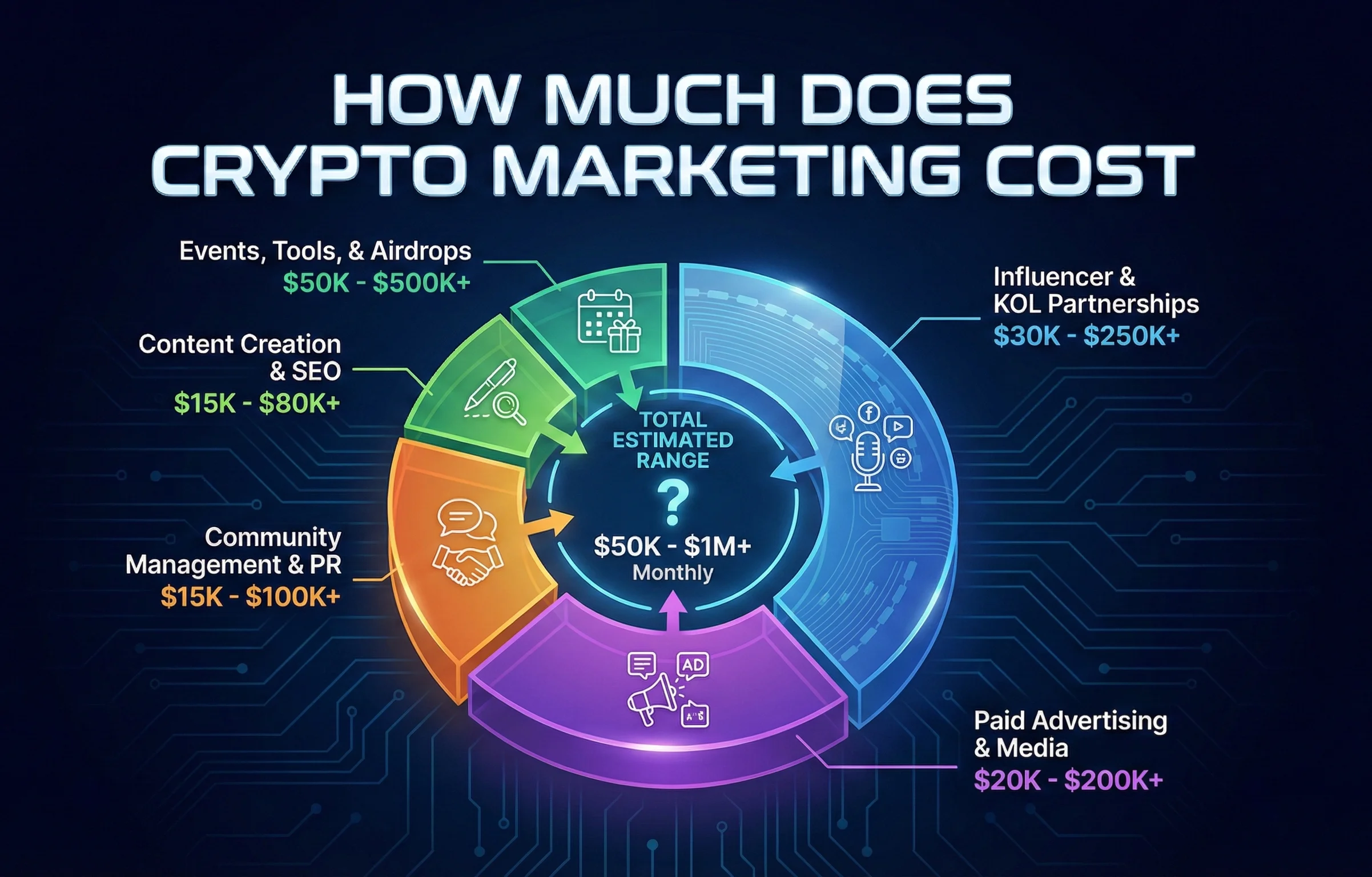Measuring performance is essential for any crypto or Web3 project aiming to grow in 2025. With competition increasing, understanding which campaigns, channels, and strategies drive adoption, engagement, and visibility is critical. At Crypto Virally, we emphasize data-driven marketing, helping projects track the right metrics to optimize resources and achieve measurable growth.
What metrics to track in Marketing
1. Community Growth and Engagement Metrics
Communities are the backbone of crypto projects, making growth and engagement tracking essential. Monitor metrics such as active users on Telegram and Discord, new member growth, message volume, and participation in events or AMAs. Engagement rates indicate how invested users are in the project and highlight which campaigns or content types resonate most. Tracking these metrics allows teams to refine community management strategies, reward participation, and maintain active, loyal members.
2. Token and NFT Adoption Metrics
Understanding adoption rates provides insights into the effectiveness of marketing campaigns. Track wallet creation, token purchases, NFT minting, secondary market activity, and staking participation. These metrics show how users interact with the project and indicate whether campaigns are driving real adoption. High adoption rates correlate with strong marketing performance, helping projects focus on channels that maximize conversions and engagement.
3. Website and Landing Page Analytics
Website performance directly reflects marketing effectiveness. Track unique visitors, session duration, bounce rates, and conversion rates for landing pages, token sale pages, and NFT collections. Monitoring these metrics helps identify which content, calls-to-action, or campaigns attract and convert users most effectively. Optimizing website performance ensures a seamless user experience, improving conversion and adoption rates.
4. Social Media Performance Metrics
Social media remains a major driver of visibility and engagement. Track likes, shares, retweets, comments, impressions, and engagement rates across platforms like X, Instagram, TikTok, and LinkedIn. Identify which posts, hashtags, or campaigns generate the highest engagement. Social metrics indicate project popularity, audience sentiment, and the effectiveness of content strategy. Projects that actively analyze social media metrics can optimize campaigns, increase reach, and foster community participation.
5. Influencer Marketing ROI
Influencer campaigns are critical for Web3 visibility. Track engagement metrics, referral traffic, token purchases, and NFT sales generated by influencer content. Evaluating ROI ensures that influencer partnerships deliver measurable results. Combining quantitative data with qualitative feedback, such as audience sentiment, allows projects to adjust influencer selection and campaign strategy for maximum impact.
6. PR and Media Metrics
Public relations campaigns require tracking to determine effectiveness. Monitor media mentions, article reach, press release engagement, and sentiment analysis. PR metrics indicate brand credibility and visibility, showing how audiences perceive the project. Successful PR campaigns amplify awareness, attract investors, and support community growth. Projects using these insights can refine messaging, target relevant outlets, and optimize exposure.
7. Paid Advertising Performance
Paid campaigns should be closely tracked for click-through rates, cost per acquisition, conversions, impressions, and engagement. Understanding which ads perform best across channels such as Google Ads, Meta Ads, or crypto-specific networks allows for budget optimization. Projects can scale high-performing campaigns while reducing spend on underperforming ones, ensuring maximum ROI and audience acquisition efficiency.
8. Email and Newsletter Metrics
Email campaigns remain effective for engagement and retention. Track open rates, click-through rates, conversions, and unsubscribes to understand user interest and campaign effectiveness. Segmentation analysis allows personalized messaging, increasing engagement and participation in token sales, NFT drops, or governance initiatives. Optimizing email metrics ensures direct communication remains impactful and relevant.
9. Conversion and Funnel Metrics
Conversion tracking provides insights into the entire user journey. Monitor how many users move from discovery to wallet creation, token purchase, or NFT minting. Funnel analysis helps identify drop-off points and optimize marketing touchpoints. By understanding conversion pathways, projects can refine messaging, improve user experience, and increase adoption efficiently.
10. Sentiment and Reputation Metrics
Social sentiment and reputation tracking reveal how communities perceive a project. Tools like LunarCrush, Nansen, or social listening platforms monitor positive, neutral, and negative sentiment, mentions, and trending discussions. Understanding community perception allows projects to respond proactively, improve messaging, and maintain credibility. Projects that prioritize sentiment analysis can mitigate risks, strengthen trust, and foster long-term engagement.
By tracking these metrics, crypto projects in 2025 can measure performance, optimize campaigns, and make informed decisions that drive adoption, visibility, and engagement. Crypto Virally integrates these insights into actionable strategies, ensuring projects achieve sustainable growth and measurable ROI across every marketing channel.



